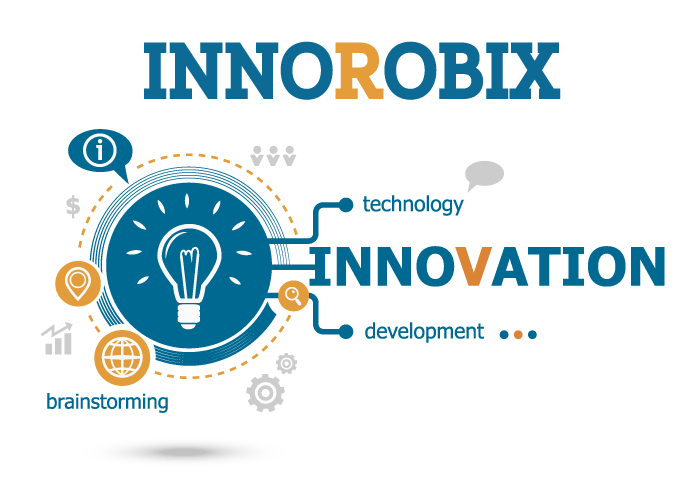In an era where industrial automation is rapidly evolving, the seamless integration of diverse systems has become more than just a technical necessity; it is a cornerstone of operational excellence. Imagine a symphony where every instrument, from the powerful percussion of Atlas Copco’s Open Protocol to the harmonious strings of Ignition’s versatile platform, plays in perfect unison. This intricate orchestration is made possible by the Innorobix driver, a sophisticated tool that bridges the gap between these two powerhouse technologies. In this article, we delve into the best practices for integrating Atlas Copco Open Protocol with Ignition using the Innorobix driver, offering a roadmap to achieving a seamless, efficient, and technologically harmonious industrial environment. Whether you are an automation engineer, a system integrator, or a tech enthusiast, join us as we explore the strategies that can transform complex integration challenges into a symphony of operational efficiency.
Understanding the Basics of Atlas Copco Open Protocol and Ignition Integration
When delving into the integration of Atlas Copco Open Protocol with Ignition using the Innorobix driver, it’s essential to grasp the foundational elements that drive seamless connectivity. The Open Protocol, developed by Atlas Copco, is a standardized communication protocol specifically designed for industrial tools. Understanding its structure and commands can significantly enhance the efficiency and reliability of your automation processes. The protocol operates through a series of predefined messages, ensuring precise control and monitoring of torque tools. By leveraging these messages, you can achieve real-time data acquisition, tool configurations, and error handling, all crucial for maintaining optimal production workflows.
On the other hand, Ignition serves as a powerful platform for industrial automation, offering robust SCADA and IIoT capabilities. Integrating it with the Open Protocol through the Innorobix driver involves several best practices to ensure a smooth operation. Firstly, ensure that both systems are properly configured to communicate over the same network. This involves setting up IP addresses, ports, and ensuring firewall settings allow for the necessary traffic. Secondly, utilize the Innorobix driver’s built-in tools to map Open Protocol messages to Ignition’s tag structure, enabling seamless data flow and real-time visualization. regular monitoring and debugging are essential to promptly address any integration issues, ensuring continuous and efficient operation.
Essential Configuration Steps for Seamless Communication
To ensure flawless integration of Atlas Copco Open Protocol with Ignition using the Innorobix driver, pay close attention to the initial configuration steps. Start by confirming that all necessary software components are up to date. Check for the latest versions of the Ignition platform, Innorobix driver, and Atlas Copco tools firmware. Once your software is current, configure the network settings to ensure seamless communication. Verify IP addresses and subnet masks align with your network architecture. Additionally, ensure that firewall settings are adjusted to allow communication between the devices and the Ignition server.
Next, proceed to the detailed configuration within the Ignition platform. Add the Innorobix driver module to your Ignition gateway, and configure it to recognize the Atlas Copco tools. This involves setting up device connections with the correct protocol settings, such as port numbers and communication timeouts. Utilize the diagnostic tools within Ignition to monitor the connection status and troubleshoot any issues. Fine-tune the polling intervals to balance performance and data accuracy, ensuring your system operates efficiently without overloading the network. By meticulously following these steps, you set the foundation for a robust and reliable integration.
Optimizing Performance with Innorobix Driver Settings
When it comes to achieving seamless integration between Atlas Copco Open Protocol and Ignition, leveraging the Innorobix driver settings can significantly enhance performance. Fine-tuning these settings ensures that you harness the full potential of your automation systems. To start, ensure that your driver is configured to handle the specific communication needs of your equipment. This involves:
-
- Adjusting communication timeouts: Fine-tune the timeout settings to balance responsiveness and reliability.
-
- Optimizing polling intervals: Set polling intervals that match the operational demands of your application, ensuring timely data retrieval without overloading the network.
-
- Configuring buffer sizes: Appropriately sized buffers can prevent data loss and ensure smooth data flow between the protocol and Ignition.
Additionally, consider the environmental factors that might impact the performance of your system. Implementing robust error handling and recovery mechanisms can mitigate potential disruptions. Key strategies include:
-
- Implementing retry logic: Configure the driver to automatically retry failed communications, reducing manual intervention.
-
- Monitoring network health: Use network monitoring tools to proactively identify and address issues that could affect communication.
-
- Regularly updating firmware: Keep the firmware of your Atlas Copco devices up-to-date to benefit from the latest performance improvements and bug fixes.
Troubleshooting Common Issues in Atlas Copco and Ignition Integration
When integrating Atlas Copco Open Protocol with Ignition using the Innorobix driver, some common issues may arise. One frequent challenge is communication timeouts. To mitigate this, ensure that your network configuration is optimized. Check for network latency and packet loss, and consider using Quality of Service (QoS) settings to prioritize protocol traffic. Additionally, ensure that both the Atlas Copco equipment and Ignition platform are running the latest firmware and software updates to avoid compatibility issues.
Another prevalent issue is the incorrect mapping of parameters. This can be resolved by meticulously following the parameter mapping guidelines provided by Innorobix. Verify that all parameter IDs and data types match those specified in the Open Protocol documentation. Utilize the debugging tools within Ignition to trace data flow and identify discrepancies. If discrepancies persist, double-check the configuration settings within the Innorobix driver to ensure they align with your specific use case.
Q&A
Q: What are the initial steps to integrate Atlas Copco Open Protocol with Ignition using the Innorobix driver?
A: The journey begins with a clear roadmap. First, ensure that you have the latest versions of Ignition and the Innorobix driver installed. Next, familiarize yourself with the Atlas Copco Open Protocol documentation. Connecting the hardware is the next crucial step, so make sure your Atlas Copco tools are networked and accessible. configure the Innorobix driver within Ignition, ensuring that the communication settings match those of your Atlas Copco devices.
Q: Are there any specific configuration settings in Ignition that are crucial for this integration?
A: Absolutely! Pay close attention to the communication settings. Ensure that the IP addresses, ports, and protocols align between the Atlas Copco devices and the Innorobix driver in Ignition. Additionally, it’s vital to configure the scan class and tag settings in Ignition to ensure timely and accurate data collection.
Q: How do I ensure secure communication between Atlas Copco tools and Ignition?
A: Security is paramount. Implement network security measures such as firewalls and VPNs to protect data in transit. Within Ignition, use secure protocols and consider encrypting sensitive data. Regularly update both Ignition and the Innorobix driver to patch any vulnerabilities. Lastly, limit access to the configuration settings to authorized personnel only.
Q: What are some common pitfalls to avoid during this integration process?
A: One common pitfall is mismatched communication settings, which can lead to data not being correctly transmitted. Double-check all your settings before going live. Another issue is insufficient network bandwidth, which can cause delays or data loss. Ensure your network can handle the data load. Also, avoid neglecting the importance of regular maintenance and updates to both software and hardware components.
Q: Can I test the integration before deploying it fully in my production environment?
A: Yes, and you should! Set up a test environment that mirrors your production setup. Use this environment to simulate real-world conditions and monitor how well the Atlas Copco tools communicate with Ignition through the Innorobix driver. This is your opportunity to troubleshoot and fine-tune the integration without risking production downtime.
Q: What kind of data can I expect to collect from Atlas Copco tools through this integration?
A: The treasure trove of data includes torque measurements, angle data, cycle counts, and error codes, among others. This data can be invaluable for monitoring tool performance, ensuring quality control, and analyzing production efficiency. With Ignition’s powerful visualization and analysis tools, you can turn this raw data into actionable insights.
Q: How do I handle updates and maintenance for this integrated system?
A: Regular updates and maintenance are crucial. Schedule periodic checks to ensure that both Ignition and the Innorobix driver are up to date. Keep an eye on firmware updates from Atlas Copco as well. Implement a maintenance log to track any changes, updates, or issues that arise, and have a rollback plan in case an update causes unexpected problems.
Q: Are there any resources or support channels available for troubleshooting issues in this integration?
A: Definitely. Both Atlas Copco and Ignition have robust support channels. The Innorobix driver documentation is a great starting point. Online forums, user communities, and official support tickets can provide additional help. Don’t hesitate to reach out to these resources when you encounter challenges.
Q: How can I optimize performance once the integration is in place?
A: Optimization is an ongoing process. Regularly review and analyze the collected data to identify any bottlenecks or inefficiencies. Adjust the scan rates and tag configurations in Ignition to balance performance with data accuracy. Keep your network infrastructure robust to handle the data flow smoothly. Continuous improvement should be your guiding mantra.
Q: Can this integration scale with my growing production needs?
A: Yes, scalability is one of the strengths of this integration. As your production grows, you can add more Atlas Copco tools and expand your Ignition system. Ensure that your network infrastructure can support the increased data load, and consider investing in more powerful hardware if needed. Planning for scalability from the outset will save you time and resources in the long run.
Q: What are the long-term benefits of integrating Atlas Copco Open Protocol with Ignition via the Innorobix driver?
A: The long-term benefits are substantial. You gain real-time visibility into your production processes, enabling better decision-making and more efficient operations. The integration can lead to improved product quality, reduced downtime, and enhanced overall productivity. Plus, with the flexibility and scalability of Ignition, you’re well-equipped to adapt to future technological advancements and production demands.
The Conclusion
As we conclude our exploration of the best practices for integrating Atlas Copco Open Protocol with Ignition using the Innorobix driver, it’s clear that the journey towards seamless automation is paved with the right tools and knowledge. By leveraging these insights, you are now better equipped to optimize your operations and elevate your industrial processes to new heights.
Yet, the path to excellence is ever-evolving. If you find yourself yearning for more tailored guidance or have specific queries about your unique setup, Innorobix Automation stands ready to assist. Our team of experts is dedicated to helping you unlock the full potential of your automation systems, ensuring that every component works in perfect harmony.
Don’t hesitate to reach out and discover how Innorobix Automation can support your next big leap in efficiency and innovation. Your success is our mission, and together, we can transform the future of industrial automation.

















